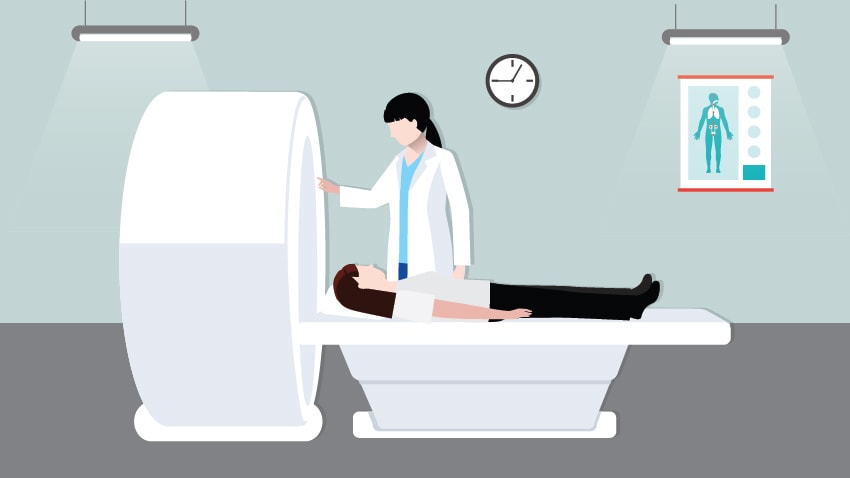Rosemary Clandos, June 5, 2017:

Sharpshooters who aim at lung cancer tumors target problems while protecting the innocent bystander tissue that can get caught in the crossfire.
Lung cancer is the leading cause of cancer death in the U.S., and about 82 percent of the cases involve nonsmall cell lung cancer. Radiation therapy is the mainstay treatment, but tumor control may be poor for advanced cases.
Researchers at the University of Michigan Comprehensive Cancer Center found an innovative approach to improve control of locally advanced lung cancer tumors while preserving more normal tissue. It involves a midtreatment PET-CT scan using the radioactive tracer fluorodeoxyglucose (FDG) and then individualizing escalated radiation to the target region the tracer identifies.
“We deliver higher radiation doses to the more aggressive tumor areas, and we spare more tissue in the heart, lung and esophagus,” says Shruti Jolly, MD, associate professor of radiation oncology at Michigan Medicine.
Researchers found that 82 percent of the 42 patients enrolled in the study had local tumor control at two years. For overall tumor control, the rate was significant at 62 percent of patients. In the past, the overall rate for tumor control was 34 percent. The study was published in JAMA Oncology.
The researchers think this is the first study that has adapted treatment to a patient’s response to a midtreatment PET scan.
“My expectation is that this will become the new paradigm for radiation therapy,” says Ted Lawrence, MD, PhD, Isadore Lampe professor and chair of radiation oncology at Michigan Medicine.
A national test
With standard radiation treatment, a plan is made at the start of treatment and a uniform dose of radiation is given each day for 30 days.
SEE ALSO: How Radiation Therapy Is Becoming More Personal
“That’s what everyone around the country does,” Lawrence says. “We were trying to treat tumors uniformly, but lung tumors are not uniform. So we realized we should be doing something differently.”
By doing an FDG PET-CT scan during the course of treatment — rather than after the treatment, when it’s too late to do something about the results — the researchers could target the more active part of the tumor with more intense radiation, Lawrence says. “We found that two-thirds of the way through treatment (or at about 20 days) is the sweet spot.”
“At the University of Michigan Department of Radiation Oncology, we have ongoing research protocols evaluating both imaging and blood biomarkers to individualize lung cancer radiation therapy,” Jolly says.
“This approach is transportable. Any good radiation department can do this,” Lawrence says. “It doesn’t require more special equipment. People are excited about our concept, and now it’s being tested in a national trial.”
The biggest impediment to the treatment is the sophisticated and labor-intensive replanning that needs to be done after the midtreatment scan. “It involves a big team working very closely together,” Lawrence says.
“The next phase is to look at normal tissue. We don’t want to injure the lungs, heart and esophagus. Our plan is to spare normal tissue by rearranging the radiation beams,” Lawrence says.
The patients in the study had inoperable and unresectable stage 2 or 3 nonsmall cell lung cancer. The research lasted 47 months.
Feng-Ming (Spring) Kong, MD, PhD, was the lead researcher in the study. She is a professor of radiation oncology and of medical and molecular genetics at Indiana University School of Medicine and former faculty in the University of Michigan department of radiation oncology.
